With its simple melody, haunting harmonies, and space for liberal use of tempo rubato, the Prelude in E Minor is one of Chopin’s most beautiful compositions—one that gives the student a wonderful work to perform, while also teaching the pianist a great deal about finesse and interpretation. I look at the piece from multiple perspectives here, as part of GRAND PIANO PASSION™’s well-regarded Classical Piano Music Amplified™ series.
Bringing Out the Melody in the Chopin Prelude in E Minor
When we think of Chopin, one of the things that always comes to mind is melody. He was inspired by the operas of Bellini, who stated that a composition needs three things: melody, melody, and always melody. However, if you play the right hand part of this work, you will not find much in the way of a melody. The magic happens when the very simple melodic idea is combined with the beautiful harmonies. I think this is the key to the interpretation. Play the left hand by itself and listen to where you think the harmonies brighten or become darker in color.
Infusing the Prelude with Emotion
The overall mood of the piece is reflective and even tragic and angry. One way to infuse the piece with emotion and intrigue is to use a great deal of tempo rubato; this approach also prevents the constant eighth note rhythm of the left hand from becoming too predictable.
The Prelude in E Minor builds to its powerful climax at measures 16–18 and then moves away, as if exhausted by the emotion. In measure 16, Chopin writes the word stretto, which means narrowed, indicating that the tempo should push forward toward the climax. From measure 18 to the end, pace the calming of the emotion through continual diminuendo and ritardando. It is easy to get too soft or too slow too soon in a situation such as this, so always think from the end of the phrase: how soft and how slow do you want it? Then think backwards to achieve the result.
Achieving Balance in the Prelude in E Minor
One challenge is keeping the left hand part soft. There are almost always three notes in the left against the one note in the right, making it easy for the left hand to overpower the right hand. To achieve the desired balance, relax your left hand fingers while keeping the right hand more curved. The two hands will then be sufficiently different in volume and texture that you can be expressive with the right hand melody.
Using Your Hands
When you are learning the left hand, analyze the changes from chord to chord. Much of the time only one or two notes change, so you do not have to rearrange your hand with each change of chord. On measures 19–20, feel your way in the right hand so that you can focus on the more difficult left hand. The leap from the B octave in the left hand to the chord is difficult, so practice forming the chord as you are making the leap. If your hand will not accommodate the chord, leave out the top A. Chopin had very large hands, and often small revisions such as this need to be made for smaller hands. The same is true with the final three chords; you could leave out the bottom notes on any of them if necessary.
Performances of the Chopin Prelude in E Minor
The two performances on YouTube I would recommend are Martha Argerich and Arthur Rubinstein, as I believe they represent two entirely different approaches but equally successful ones.
Notice how Argerich (on the left) uses considerable rubato right from the start in order to create the mood; whereas Rubinstein begins with a great intensity, and then when the rubato comes in it is quite a surprise, gaining the listener’s attention as the mood changes. Both build to the climactic moment and then away from it very effectively.
Personal Influence from Chopin’s Life
While it is difficult to know exactly what influenced a composer at the time of writing a particular piece, perhaps the Prelude in E Minor is a statement of the suffering Chopin felt from his health issues with tuberculosis.
Musicologists believe Chopin may have initiated the Prelude in E Minor as early as 1831 and that he certainly completed it by January of 1839, along with the other 23 of his preludes, which formed a set. The year before, his lover, the French female novelist George Sand, reported in a letter to a friend that “Chopin had a terrible hemmorage by the time we arrived in Palma,” on their way back from their famous getaway to the island of Mallorca off the coast of Spain. To her lawyer, she confided in a letter that Chopin “arrived in Barcelona spitting a basinful of blood and dragging himself like a specter.” (This correspondence described in Chopin by George R. Marek and Maria Gordon-Smith, Harper and Row, 1978.) Although Chopin’s doctors had not officially diagnosed him with tuberculosis at the time that he completed all 24 of his preludes, including the E Minor, he certainly was showing the symptoms.
It’s also possible, however, that the Prelude in E Minor is a very eloquent statement of Chopin’s inner life. I think in his personal life, he sometimes felt isolated from the world and depressed. At the age of 21, he left behind his family and the Warsaw of his childhood, at the time a provincial city, for the glamour of Paris, an international capital. When he arrived in Paris in 1831, at the age of 21, he would never see Warsaw again.
Additional Listening
I would highly recommend Benjamin Zander’s TED talk about this work. The classical conductor offers wonderful insight, and the manner in which he views music and interpretation, I believe, is essential to the interpretation of any piece of music. Using the Chopin Prelude in E Minor as an example (starting at about 6:50 in the video below), Zander shows the importance of thinking about the vision of the whole piece rather than thinking about each note individually: “This is about the long line, like the bird who flies over the field and doesn’t care about the fences underneath.”
I also recommend the scene with Jack Nicholson in the movie Five Easy Pieces where his character plays the work, as a means of understanding the real pathos of the piece.
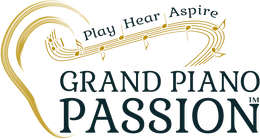


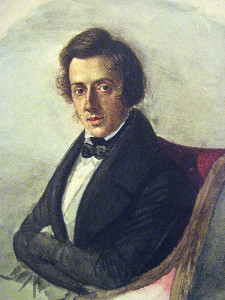
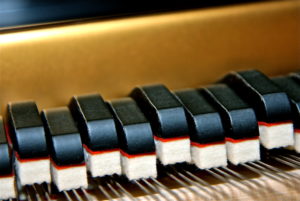
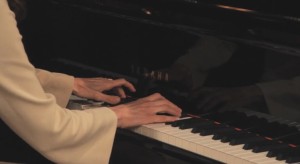
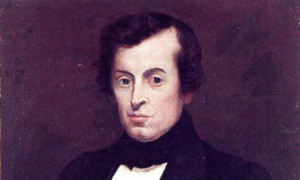
Thank you. Also, thanks for highlighting the Ted talk. I look forward to it. As much as I loved learning this prelude, it’s one that I have no interest in playing again. It brought so much sadness to me while playing and reminds me of how sad it made my father while listening to me perform it. Funny how certain music can do that, but I suppose that only shows the greatness of the composer.
Robin, I can understand how with your history with the piece you have no desire to play it again. I hope you enjoy the TED talk. I watched it and thought the end was amazing!
Thank you for this in-depth demonstration of Chopin’s music, the depth of his passion, especially deep in this small work. It speaks to my soul every time I play it and I enjoyed the conversation about the use of rubato which is essential to capture that interiority.
Your site offers depth and insight that I find invaluable.
Mary Jo, Thanks for taking the time to write, and I do feel a lot of passion in this piece too. I really like how Cosmo Buono captured the technique that enables that passion in this article.
I have played this Lovely Chopin Prelude since I was a child in the 1950s. However, we did not have Mozart’s letter of 1777, or Liszt’s comments on Chopin’s tempo rubato until much later! While I played it almost exactly like Cosmo Buono (and it is lovely), I now know that Chopin’s rubato was not a speed up slow down performance like we learned in the 50s. Mozart wrote to his father in 1777, “Everyone is surprised that I always remain strictly in time; they cannot understand that the left hand should not in the least be concerned in tempo rubato. When they play, the left hand always follows along” (Palmer, Chopin: An Intro 5). Liszt and many of Chopin’s students described Chopin’s rubato as “never varying in the basic meter” (Palmer, Chopin: Preludes 11). I have adjusted my playing of his music quite a bit since my student days, yet when I used this Prelude in palliative music during an internship at the Mayo Clinic in Rochester in 2007, the unvarying tempo was well received by all who heard. I am glad that we now have access to letters and manuscripts that were formerly held in private sources.
Arlene Bodmer Harouff
Thank you for this erudite and informative comment. Great that you are still enjoying the Chopin Prelude after so many years.
Nancy, Thank you for that wonderful insight on how to make the right hand melody stand out in the Chopin Prelude in e minor. I am working on it now and plan to perform it at my school recital in January. Keeping the left hand from overpowering the right hand certainly is a challenge. With my hearing loss, too, I am never sure I am playing the melody loud enough or hitting the piano keys hard enough with the right hand as I am not always hearing the right hand melody. Yes it is very soft and delicate and that is what makes it so beautiful. My teacher tells me to keep my left hand on the keys and just press down and use the pedal to sustain the melody. Pedal with every change of chord. Just presing with the left hand is enough to get that sea of sustained sound with the left hand. My teacher tells me that while I am doing that to use the right hand to strike down on each key and do it gracefully, keeping the fingers curved and moving forward as if I am dancing with my hands. My teacher says to play it slowly and don’t rush, just feel that emotion and keep the hands from jumping up and down. Just press with the left hand and lightly tap down with the right hand. And gracefully dance with the right hand. Now off to practice!
Thanks for these informative notes on the prelude. I’m working without a tutor during the pandemic, so it’s very useful to read your suggestions. I already decided to omit the A on the “leap chord” as it hurts my hand to stretch for it. I was glad to see that you also suggested it.
I’m very glad that you found this useful. The pandemic is creating a lot of challenges for piano lessons. I’m taking mine online right now…grateful for that, but it’s not the same.